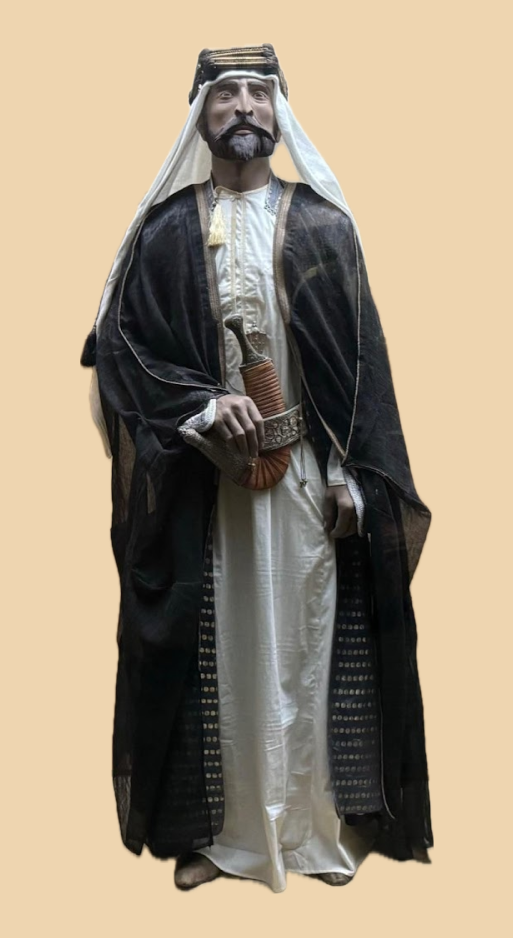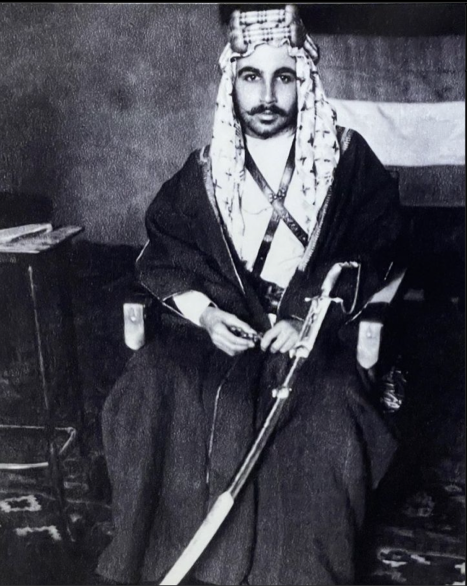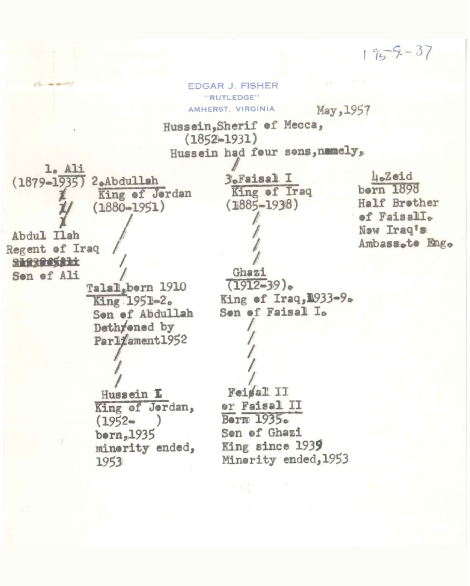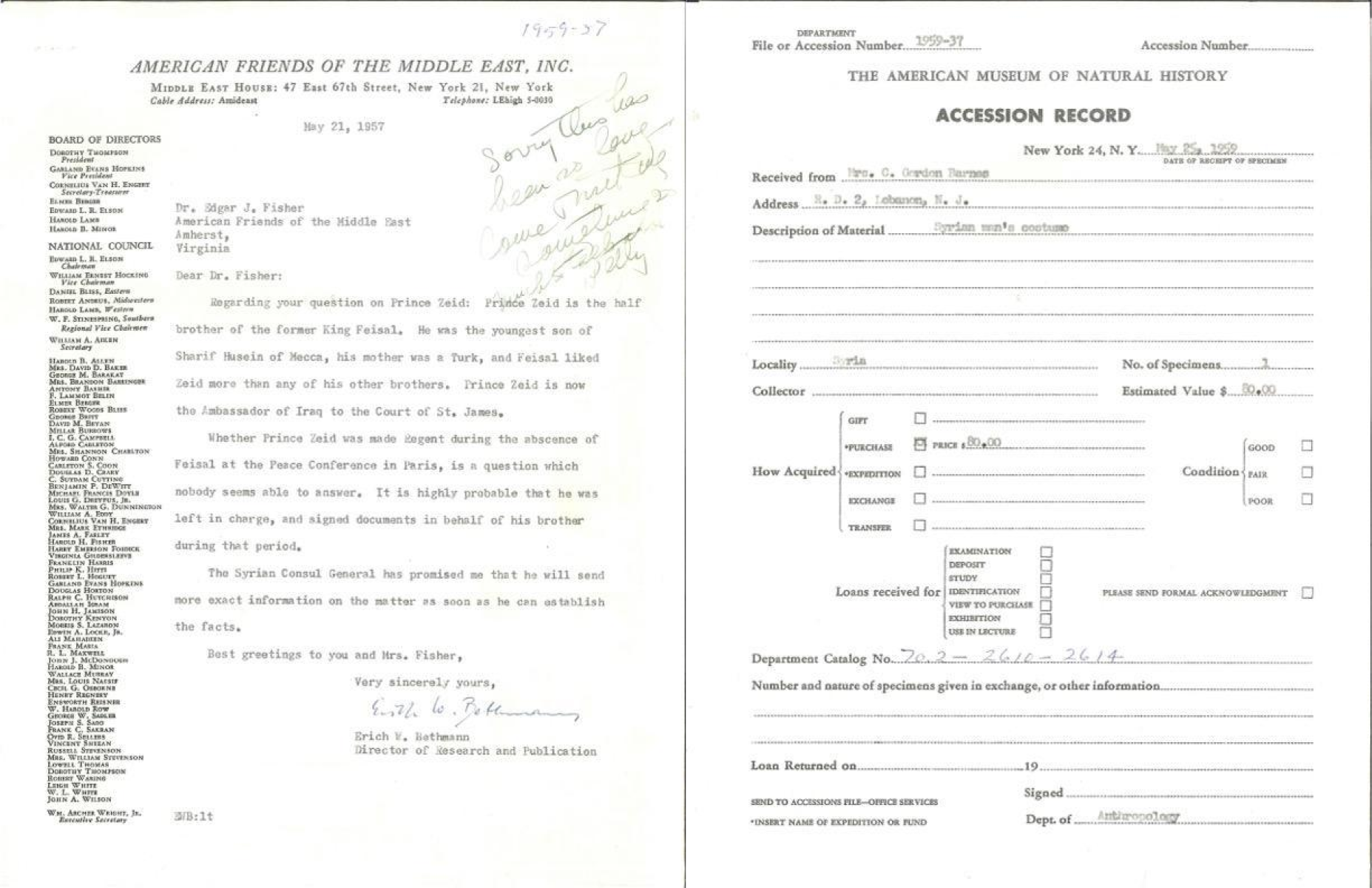The Hashemite Arab: Stitching Together an Arab History
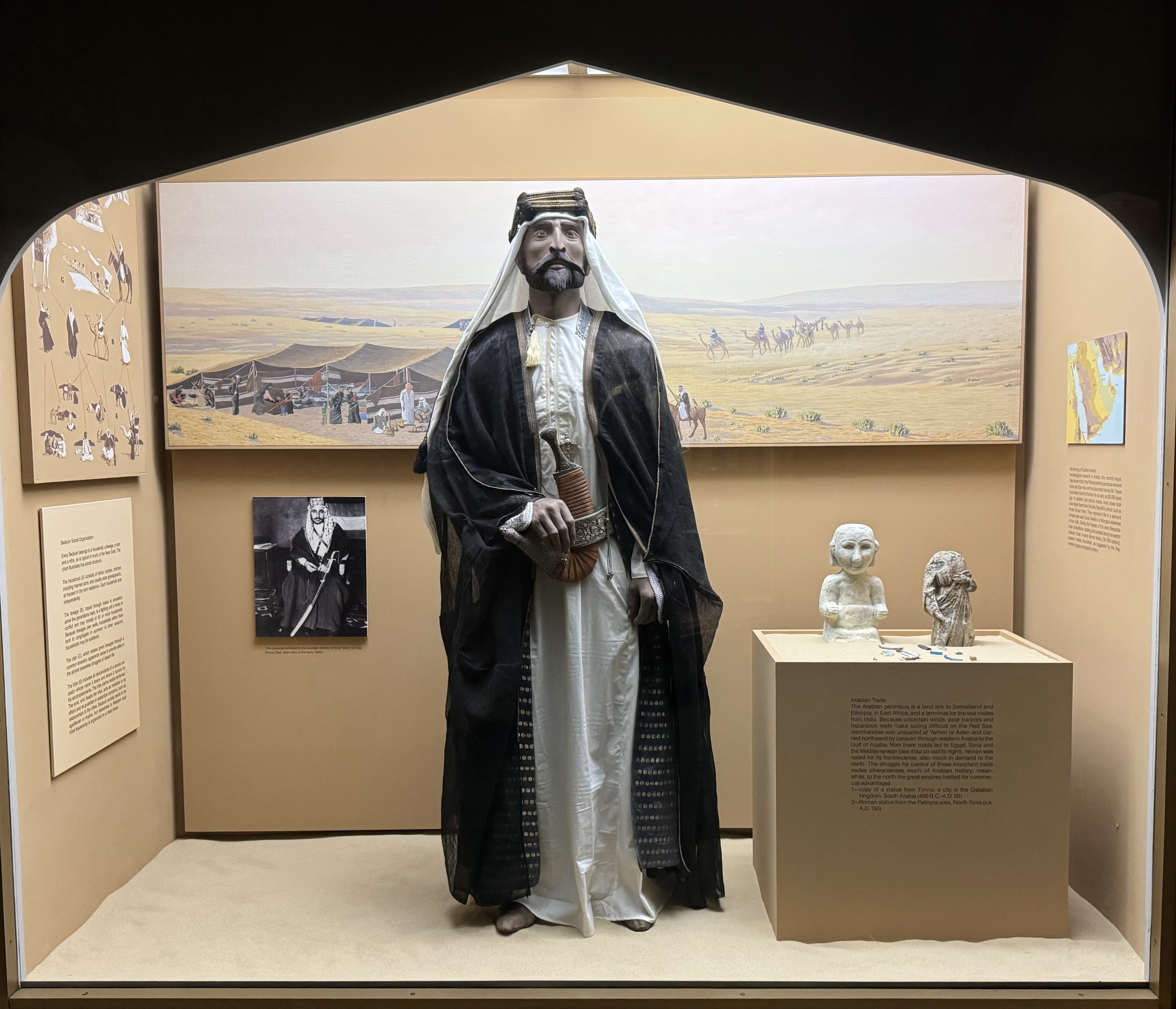
Who is this person behind the glass?
Does this mannequin look similar to the man in the photo (below and pictured in the back of the case), whose robe the mannequin is wearing? Did he model for the mannequin? The answer to both these questions is no. The museum does not have detailed information regarding the creation of this mannequin, but archival records suggest that one of the Museum’s exhibition preparators reworked the head of a pre-existing mannequin of a Berber man into what is presented today as the “Hashemite Arab” man. Though often perceived in the West as part of Arab culture, the Berber people are an Indigenous group whose roots trace back to the pre-Arab inhabitants of North Africa and are separate from the Arab Hashemites. Without referencing a model or considering cultural specificity, this repurposing reinforces stereotypes of Arab culture as homogeneous and exotic. In addition, the mannequin’s costume is assembled from several disparate sources. In sum, the mannequin embodies a romanticized and vague perception of Arab people akin to the portrayal of Arabian royalty in the 1962 film Lawrence of Arabia and elsewhere, creating an alluring but false sense of Arab culture, at once luxurious and outlandish.
The man in the photo (left) is Prince Zaid bin Al Hussein (Ar. زيد بن الحسين b. 1898 d. 1970), the fourth son of Sharif Hussein bin Ali (Ar. الشَريفُ حُسين بِن عَليّ ), the Emir of Mecca, and the younger half-brother of Faisal I (Ar. فيصل الأول), king of Iraq. Between 1916 and 1918, Prince Zaid joined Faisal I’s troops and played an active role in the Arab opposition to the Ottoman Empire, which was in power in the region at the time. Thereafter, he continued to support his half-brother’s efforts to establish the Hashemite Kingdom of Iraq and later served as its ambassador in Berlin, Ankara and London.
In 2001, Prince Zaid’s grandson, Zeid bin Ra’ad Al-Hussein (Ar. زيد بن رعد الحسين), visited AMNH, where he was delighted to discover his grandfather’s clothing on display on the mannequin in the exhibition case. Following this visit, he donated a photo of Prince Zaid dressed in traditional garments, which is now exhibited alongside the mannequin.
Who are the Hashemites, and who are the Bedouin people?
This mannequin, meant to represent a Hashemite Arab, is located in a case that discusses Bedouin social organization; the placement reflects a common conflation of North African and Arab cultures. The Hashemites and the Bedouin people have distinct identities and cultural histories. The term “bedouin” refers to a lifestyle, not to an ethnic group, and it is specific to the nomadic people of the Arabian Peninsula, North Africa, the Levant and Iraq. This term does not represent other communities and tribes who live in surrounding regions. Alongside other settled communities of the region, the Bedouin people played an integral part in shaping the Arabian Peninsula as we know it today.
The Hashemites are an Arab tribe originating in Mecca, located in the Hijaz region of Saudi Arabia. They are the descendants of the prophet Muhammad, and they ruled Mecca from the 900s into the 1900s CE. After the establishment of the Kingdom of Hijaz (1916-1924) by Sharif Hussein bin Ali (Ar. الشَريفُ حُسَين بِن عَليّ), the Emir of Mecca, Hashemites participated in the Arab Revolution against the Ottoman Empire. In an effort to achieve an independent Arab nation that would include the Arabian Peninsula, the Levant and Iraq, Hashemites collaborated with the British against the Ottomans, which resulted in the recognition of Arab independence, with certain exceptions. The descendants of Sharif Hussein continued to rule Iraq between 1921 and 1958. Today, members of the Hashemite dynasty still occupy major political and social roles. The current King of Jordan, Abdullah II bin al-Hussein, is part of the Royal Family of Jordan that has reigned since 1921.
Because of the categorical difference between the Bedouin lifestyle and the Hashemites as a tribe, this display choice begs re-evaluation.
What is he wearing?
In 1959, Mrs. C. Gordon Barnes donated a set of clothing, including a robe (Ar. ثَوْب ‘thawb’ or regionally دِشْدَاشَة ‘dishdasha’), a silk headband (Ar. عِقَال ‘agal’), a colorful headscarf (Ar. شُمَاغ ‘shemagh’) and leather shoes (Ar. الحذاء ‘al-hidha’’) to AMNH. Barnes stated that these items were in Prince Zaid bin Al Hussein’s possession prior to 1919.
Besides the robe and leather shoes from Barnes’ donation, exhibition curators incorporated other garments of differing provenance into the attire worn by the mannequin today. The white undergarment (Ar. دِشْدَاشَة ‘dishdasha’) is from Oman, the dagger (Ar. جنبية ‘janbiya’) and belt (Ar. حزام ‘hezam’) are from Yemen and the headband and headscarf are from Saudi Arabia. In the 1980’s, curators also added an embroidered cloak (Ar. عَبَاءَة ‘abā’) from Kuwait to protect the robe from fading. This jumbled combination of clothing items from various regions of the Arabian Peninsula creates an unrealistic caricature of an Arab prince and represents a patchworked, romanticized display of fragments of Arab culture. Though it may be aesthetically pleasing, it embodies widespread Western biases towards the Middle East and North Africa held in the late 1900s.
